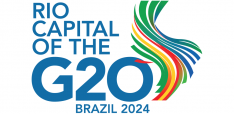Syrian Refugee Crisis – The Real ‘Red Line’
The Syria crisis is certainly more than just another Arab Spring conflict or civil war. Syria presents a large-scale humanitarian crisis for the region. It may be another year until we understand fully the devastation caused from this conflict. Currently, an estimated 1.4 million Syrian refugees have taken refuge in neighboring Lebanon, Jordan, and Turkey - with tens and hundreds of thousands more on the way. The UN has called for increased aid to border areas, in spite of Russian and Chinese vetoes on these measures.
High numbers of refugees in close quarters can create its own problems. Turkey, Lebanon, and Jordan are concerned that rising numbers of Sunnis, Alawites, and others could disrupt the delicate political balances of their countries. Countries like Jordan and Lebanon have such a high number of ethnic, religious, and political groups that Syrians trying to integrate into these countries could drastically shift political demographics. Northern Lebanon is also home to Hezbollah, who has recently worked alongside Assad forces to overthrow Rebels in Qusayr this week. Hezbollah support for Assad stemming from an area of Lebanon where refugees are fleeing can create a new level of instability for refugees.
Each country is handling Syria’s refugees in their own way. Turkey, for instance, preempted the refugees’ arrival by building three camps, one of which has trailers for refugees. However, Turkey is not allowing any international media or UNHCR aid response; they’ve decided to manage the influx on their own. Turkey has reportedly had some uprisings in camps. While Turkey has historically sided with the Assad-regime, recently they have called for international actions against Assad after a bombing in a border town; Syrian military involvement is suspected. Recent events could fuel resentment and suspicion towards Syrians fleeing the conflict
Meanwhile in Jordan, the government is hard pressed to deal with the crisis. The Jordanian government is happily working alongside UNHCR efforts to provide accommodation and supplies for the growing number of refugees, currently estimated at half a million. UNHCR projects that just for Jordan; this figure could increase to a million before the end of 2013. Jordan is having a lot of capacity issues in dealing with refugees, particularly in relation to water resources. Jordan has historically had scarce water reserves, however with an influx of half a million refugees in water poor areas of Jordan — the pressure is on.
The potential for spreading Syria’s conflict increases, as more and more people flee the conflict and reach refugee camps. If there is anything the Russo-Afghan war taught us, it is that camps like these can become points of radicalization if humanitarian assistance and state building efforts are not made in the wake of protracted conflict. The possibility of radicalization adds insult to injury to Syrians who have faced over two years of turmoil, and are seeking safety.
Russia and the US have come together to attempt yet another peace summit planned for June. However, both Assad and Rebel forces are skeptical that it will be effective at creating peace. Assad has stated that the West doesn’t want the war to end, and that any attempt at reconciliation would fail. Recent battles like Qusayr, and the potential use of chemical weapons and mass atrocities make reconciliation both necessary and difficult.
The UN General Assembly has called for an investigation on the use of chemical weapons, however, without support from the Security Council, thanks to Chinese and Russian vetoes. Others like Israel have taken matters into their own hands, bombing Syria several times. It is clear that the international and regional community is torn on how to address the Syria ordeal. One thing that is clear is the need to address humanitarian concerns. This should be the real ‘Red Line’ we talk about. Whether or not Assad used chemical weapons, or certain Rebels are ‘radicals’ make us loose sight of what has already become a regional conflict. Aiding Syria’s refugees properly could stop this conflict becoming the first domino to fall, leading to a pan-regional conflict in a politically sensitive part of the world.
Sadly, the humanitarian response has been weakened by conflict-fatigue. The UNHCR funding appeal has only reached half its goal to raise just over $1 billion. Although, the Obama Administration has pledged an additional $200 million just to Jordan to help deal with their humanitarian response, this will not fill the gap. The Syrian conflict itself may be incalculable for an international military intervention, for peace summits, and even for UN peacekeepers. Something the international community can agree on is the dire need to aid Syria’s refugees — if not for Syrians fleeing the conflict than for the potential insecurity and regionalization of the Syrian ordeal. It's only just begun.
A version of this article was originally published on PolicyMic, on 13 May 2013, entitled 'Syria Crisis: More than Just a Civil War or Arab Spring Conflict'.


